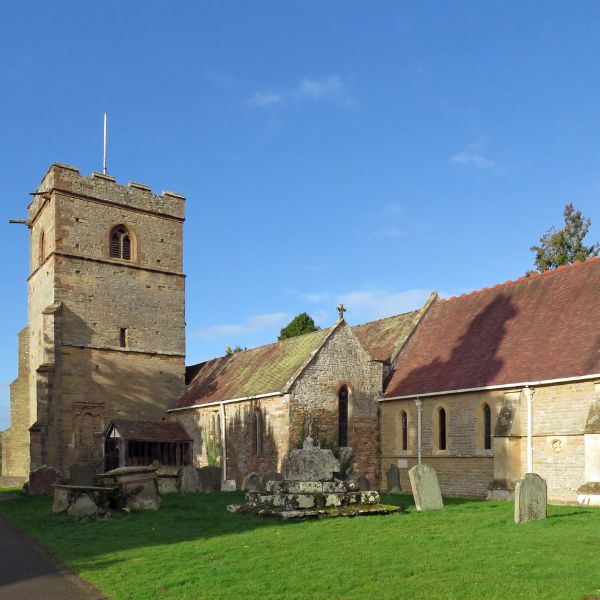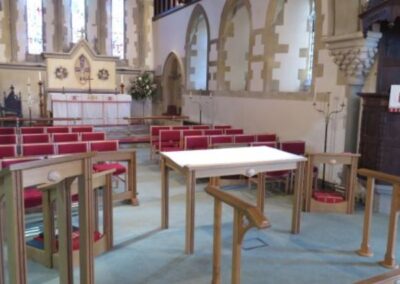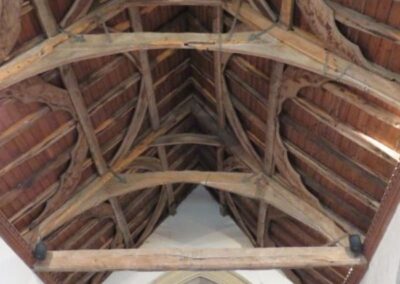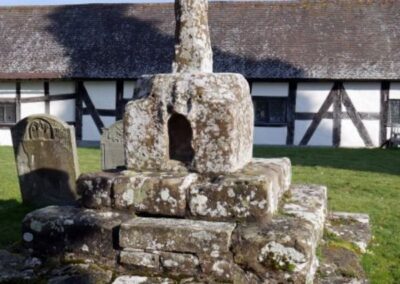St James Church, located southwest of Colwall village, has deep historical roots dating back to Saxon times. Originally serving a farming community, the church has remained central to village life despite the transformative impact of the railway’s arrival in 1860.
The earliest recorded Rector was Gerard de Eugines in 1275. The church structure has evolved over centuries, beginning with a chancel, nave, and south aisle. The south doorway, a late Norman feature, leads into a 13th-century aisle with a fivebay arcade. The tower, initiated in the 14th century, was completed in the 15th century. A significant repair in 1675 strengthened the nave roof, which features collar beams on arched braces and intricate wind braces forming sexfoiled arches.
Among its notable features is a half-pillar figure on the west wall, likely a fertility symbol. Two key memorials include a 1587 stone coat of arms for Humphry Walwyn’s parents and a 1590 brass plaque for Elizabeth Harford. The north aisle, added in 1880, accommodated Grammar School students. The Victorian chancel, rebuilt in 1865, houses a Nicholson organ. The tower remains active, with a 10-bell ring installed during the Millennium renovations.
St James the Great Church, dedicated to one of Jesus’ apostles, may have historical ties to an early Christian pilgrim route. It is a welcoming and inclusive community, supporting One Body One Faith and the Inclusive Church movement.
The church has a strong Eucharistic identity, with Holy Communion as the main Sunday service, using seasonally adapted Common Worship liturgies. Music includes both traditional and modern hymns, accompanied by choir, organ, piano, and sometimes an orchestra. Everyone is invited to receive Communion or a blessing, and a regular BCP Holy Communion service is also held. Home Communion is available for the housebound.
Hospitality is a key part of church life, with refreshments served after services. St James’s is active in the community, supporting local schools with assemblies, assisting the foodbank, providing warm spaces, and offering pastoral care.
The Ale House was built in the early 1530s during Henry VIII’s reign, as confirmed by dendrochronology. Originally, it was used to sell ale to raise funds for the Church, functioning similarly to a modern village fete. However, concerns over excessive drinking led the Bishop to sell it in 1614, after which it became an alms house for the poor. In 1989 The Ale House was restored and repurposed as the Church Hall, bringing it back into community use.
Location
Mill Ln
Colwall
WR13 6HE
What 3 Words: foggy.fuss.ripen
- On Mill Lane – 1 mile off B4218 (Walwyn Road)
- Church open daily from dawn until dusk
- Car Parking Available
- Disabled Access
- Toilets
- Refreshments – coffee shop, village shop, hotel and pub in Colwall village




